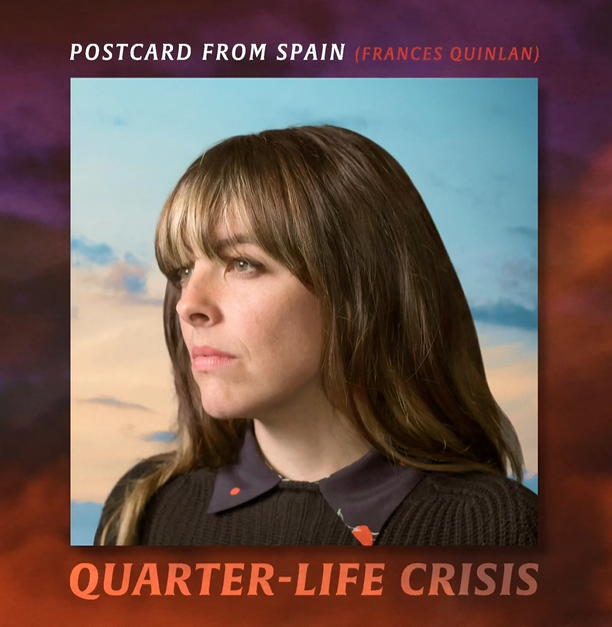
Hi folks!
It’s number two! There was another delay to this one, the time I would normally spend on the newsletter got dumped into writing up code to let me host the newsletters on the site here (which I think looks super nice).

Composite infrared image of the center of our Milky Way galaxy, which spans over 600 light-years. Credits: NASA/SOFIA/JPL-Caltech/ESA/Herschel.
What lurks at the centre of our galaxy, the Milky Way? It’s a big question with an even bigger answer. Supermassive, in fact, as identified by Prof. Andrea Ghez and Prof. Reinhard Genzel. The two astronomers were key players in making the discovery: That a supermassive object lurks at the centre of our galaxy, likely a black hole. Ultimately, this was the result of a vast collaborative project, as both academics would attest to. This is demonstrated by the following two papers, which are just two fragments of a vast foundation of academic literature that made the discovery possible: The First Measurement of Spectral Lines in a Short-Period Star Bound to the Galaxy’s Central Black Hole: A Paradox of Youth and Detection of the gravitational redshift in the orbit of the star S2 near the Galactic centre massive black hole. It might seem obvious that something big lies at the heart of the galaxy, but understanding its exact nature is incredibly difficult. That’s science. And it’s not just any science, it’s the type of science that wins you a Nobel prize.
So what exactly did Ghez and Genzel discover that earnt them the Nobel prize in Physics (shared with Penrose’s theory), and what are the interesting bits we can pluck out from this sprawling research project? Prof. Ulf Danielsson from the Nobel Committee explains in an interview immediately following the prize’s announcement that Ghez and Genzel monitored the stars orbiting the centre of our galaxy in order to prove that a supermassive object lurks there. This monitoring required some very interesting physics: The second paper linked above discusses post-Newtonian dynamics, what does this mean and why is it relevant?
In the 17th Century, Sir Isaac Newton derived the universal law of gravitation, which states that objects with mass are attracted to one another. Basically, Newton’s theory explained how different things fall. On Earth, we can watch the rain falling to the ground whilst the Moon seemingly remains held above the sky. However, this is a deceptive illusion, the Moon is falling - it’s just falling in a circle around us, this is what we call an orbit. Miraculously, Newtonian dynamics describe how all of these things occur. With this mathematical toolkit, we can describe the sort of physics that most people are familiar with: the movement of tennis balls, planets, and rockets.

An overexposed photo of the Great Rift and the centre of the Milky Way that it obscures. Captured by A. Fujii.
Building on Newton’s work over 200 years later, Albert Einstein turned everything on its head with his Theory of General Relativity which revealed that space can be curved and twisted by massive objects (objects with mass). Now, let’s turn our heads towards the centre of the galaxy, which lies between the constellations of Sagittarius and Scorpio behind a mass of dark nebulae known as the Great Rift. If the Rift were not there, our nights would be illuminated by the countless colossal stars that encircle the galaxy’s core. All that mass means lots of curved space, which in turn results in confusing behaviour that Newtonian dynamics is simply unable describe. With post-Newtonian dynamics, which incorporates general relativity, we can measure and study these stars accurately.
But what lies beyond these giant stars at the very centre? Is it a black hole, a celestial object of incredible mass? As Ghez explains in her 2004 TED talk, there are only 3 characteristics of a black hole that we can identify: mass, charge, and spin. Despite being a vicious entity that can twist the fabric of the universe, these supermassive objects are elusive. Ghez goes on to explain that she instead uses the behaviour of the stars in the galaxy’s core, behaving in a post-Newtonian way, to identify and understand the object at the centre. In particular, a star called SO-2 completes its orbit of the centre of the galaxy every 15 years. This allowed the astronomers to work out that something is sitting in the galactic core that’s smaller than our Solar System and 4 million times heavier. If it is a black hole, as the results suggest, then it has huge implications for the future, and the past, of our galaxy.
This year’s Nobel Prize in Physics is a celebration of our progress in understanding the primal forces that created us through chance and shall consume us through destiny. Pretty cool.

Cover art for Postcard from Spain.
Anderson .Paak raised a fist earlier this year and crystalised our moment in history with the most powerful track of 2020: Lockdown. Two weeks ago, he returned with JEWELZ. It’s a fun track, the slapping bass and vocoder produce a feel that would’ve allowed it to comfortably slip into a playlist for the summer we never had. JEWELZ is contrasted by my next pick, I’ve Made Up My Mind. It’s a sombre cover of a country gospel track by David Rich put together by three titans of folk: Bill Callahan, Bonnie Prince Billy, and Alasdair Roberts. The song is transformed by the melancholy imbued by Roberts' fiddle. Prince Billy references Christ in harmonious vocals that are punctuated by Callahan’s spoken testimonies. This song is part of a continuing series being put out by Callahan and Prince Billy on Drag City Records, so keep your eyes peeled for more!
Every musician has been sabotaged by this dumb pandemic, but Frances Quinlan joins the likes of Baxter Dury who was in the process of touring brilliant new material when the world fell apart. She released her solo album Likewise right before the pandemic hit and only had a few months to show it off to us. Normally accompanied by her bandmates in the form of Hop Along, I watched her perform a few songs at Rough Trade, and she hit it out of the park. Her voice is a force to be reckoned with, a contained energy that channels itself through her lyrics like electricity through a wire. Occasionally, it explodes in an illuminating way, paralysing you in the process. Her performances at NPR Tiny Desk Concert and Paste Studio NYC from March are a beautiful demonstration of this.
Fortunately for us, Quinlan appears on the latest project of Canadian producer, Ryan Hemsworth: Quarter-Life Crisis. The track, Postcard from Spain, features a chugging guitar and bassy synths that provide a fantastic backdrop for Quinlan to build towards the chorus at which point the song becomes an anthem. It’s reminiscent of one of the best songs from Likewise and one of my favourite songs from this year, Now That I’m Back. Postcard from Spain is part of Hemsworth’s larger project that is slated for a December 4th release date. He released a song, Keep Touch, earlier this year. It features serene saxophone-work by BadBadNotGood’s Leland Whitty. If Hemsworth’s collaborations so far are anything to go by, then Quarter-Life Crisis is going to be a parting kiss on the cheek of a year that doesn’t deserve any affection.

A still from the video for Sparkle Hard: The Movie.
In 2018, Stephen Malkmus released what I rate as a near-perfect album, Sparkle Hard, his seventh with The Jicks. If you know Malkmus, it’s likely that you’re aware of Pavement. Pavement were a quintessential sound of the 90’s, and Stephen Malkmus was the nucleus of that project. I imagine it must be super annoying to have work you produced several decades ago referenced in every new release, so let’s move on from Pavement and talk about Sparkle Hard. The album was accompanied by a short film that pieces together interviews with Malkmus, songs from the album, and ridiculous photoshoots. In the film, Malkmus frames the project for us:
If I was to think back about some of the things I did when I was in my twenties; there’s vulnerability, but there’s… it’s more of an unexamined life at that age. I’m beyond just like getting through stuff or putting stuff out because of some compulsion of creativity. I mean, I just try to make it interesting for myself… it has to have a reason.
In an interview with DIFFUS, Malkmus explained that the record was more planned and structured than usual. This comes across in his other interviews done in the press for this album - some of the songs have moments of explicit and pointed meaning, a rare thing for a Malkmus track. The “Freddie” mentioned in Bike Lane is Freddie Gray, an African-American man who was murdered by the Baltimore Police Department in 2015. The telling of this tragedy is accompanied by the repeated words “another beautiful bike lane”, all held together by screaming guitar chords at the heart of the song. We see these lyrics play out in our lives regularly: State-mandated violence imposed primarily upon those who aren’t white, meanwhile the middle-class occupy themselves with small issues that ultimately mean nothing.
But before we reach Bike Lane, we pass through Solid Silk which immediately precedes it on the album. Solid Silk is incredible, and has no resemblance to Bike Lane whatsoever. It’s an inspired combination of Malkmus' relaxed vocals and playful lyricism with violin strings that creates something genuinely transcendent in its serenity. It’s an anthem for the Slacker God. In a recent interview with Fader, whilst doing a press tour for his latest album Traditional Techniques, Malkmus claims that it’s one of his favourite songs:
I got some input from my producer and he wanted to put strings on there — I wouldn’t have thought of that, but it took it to a place I haven’t been. […] In terms of arrangements, it goes for more and is something that I’m proud of.
As you progress deeper into the album, it becomes obvious that there is no pattern here. Middle America might be the most popular song on the record, potentially because it sounds a lot like a Pavement track, in particular Zurich Is Stained (by Malkmus' own admission). Regardless, the song sways wonderfully in the breeze of the track’s guitarwork whilst the lyrics calmly rebel against a descent into irrelevance “I will not be one of the watchers. I will not disappear”. The songs that follow it continue to mix-up structure, we hear auto-tune and wah pedals in the second half of the album. Notably, Kim Gordon, the legendary bassist of Sonic Youth, accepted Malkmus' request to feature on Refute because she thought the song sounded fun.
What is our, the listeners, the relationship with this album? The only illumination we get on this is from a New York Times interview:
Interviewer: Who decides what a song is about, the writer or the listener?
Malkmus: Definitely the listener does. It’s Postmodern 101. It’s just fun to know from a trivial sense what the guy meant.
It becomes clear that, as Malkmus alluded to, the people the album is really concerned with are those who made it. The musicians, Malkmus, The Jicks, and everybody else who worked on it clearly revelled in the experimentation involved in making this album. That’s why it’s so versatile and completely unconcerned with creating a coherent sound or message. Instead of being a weakness, this becomes its greatest strength - Sparkle Hard is an exercise in enjoyment, and I implore you to join in.
See you in two weeks and don't forget to support artists by buying their merch or music through Bandcamp!
Solidarity and love,
Nick
x
